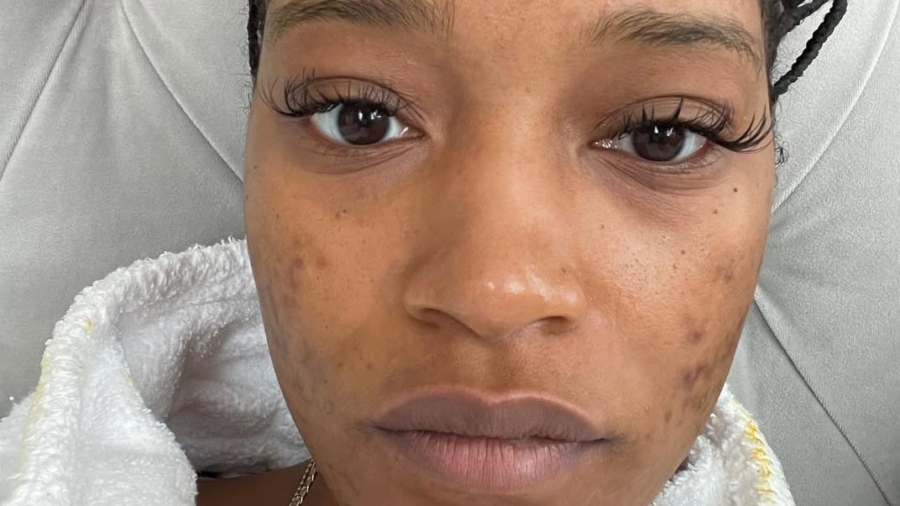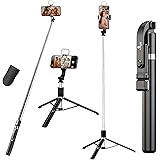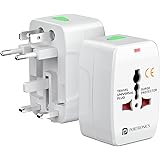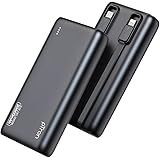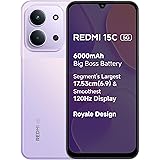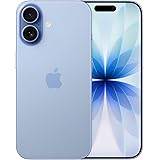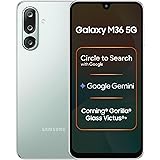Even well-intentioned content can reinforce that gap. “Before and after” acne journeys often imply a tidy arc of healing, but many people don’t get an after. For them, acne isn’t a phase. It’s a chronic condition. The idea that you have to be either confident or cured leaves little room for everything in between.
Of course, acne positivity was never meant to glamorise acne. At its best, it offered people permission to be seen in their full, imperfect skin. But when the dominant images remained aspirational—if slightly more textured—it started to replicate the same hierarchy of who gets to be visible, with the glow up becoming a requirement.
Not everyone fits that aesthetic, and some creators are pushing back against this flattening of acne narratives. For Priyanka Ghosh—a beauty content creator with almost 600,000 followers—acne positivity isn’t about romanticising the bumps in aesthetic lighting, but about refusing to let them define her. “I started having acne when I was 13; I’m 33 today, l still get acne every month, around my periods. It has this way of making you feel less wanted, less beautiful, sometimes even less you… A person who suffers from acne tries every fix, every product, every routine, every dermat, every diet. I know because I’ve been there.”
Ghosh lives with PCOS, a chronic condition that contributes to her acne flare-ups. For her, showing her acne is also a way to remind others that they’re not alone in their pain. “I’ve always made a conscious choice to show my bare face without concealer or filters, and talk about my acne issues repeatedly, so people can see that even with access to the best skincare, acne doesn’t always disappear,” she says.
Another tension the movement doesn’t always account for is emotional ambivalence. “You’re either radically accepting of your acne or you’re vain,” Shreya adds. “There’s no space to say, ‘I’m tired of this. I want clear skin. And I also want to be seen as I am.’” But skin is complicated. So is healing. The pressure to either glow through it or fix it quietly recreates the same old dichotomy—just dressed up in inclusive language.
Acne positivity is still valuable. For many, it offers visibility they never had before. But real visibility has to make space for contradiction; for the bad skin days and the good, for the flare-ups that linger and the feelings that don’t resolve on cue.
Source link
Kratos K9 Selfie Stick Tripod With Light, 67 inch /170CM Reinforced Tripod for Mobile Phone, Multi-Functional Bluetooth Long Selfie Stick for Travel,Vlogging,Compatible with iPhone and All Smartphones
₹596.00 (as of December 21, 2025 00:00 GMT +05:30 - More infoProduct prices and availability are accurate as of the date/time indicated and are subject to change. Any price and availability information displayed on [relevant Amazon Site(s), as applicable] at the time of purchase will apply to the purchase of this product.)Portronics Clamp M4 Car Phone Holder Stand with 360 Degree Rotation, Strong Grip, Suction Cup Mount, Single Hand Use, Shockproof Build, Mobile Stand for Car (Black)
₹249.00 (as of December 21, 2025 00:00 GMT +05:30 - More infoProduct prices and availability are accurate as of the date/time indicated and are subject to change. Any price and availability information displayed on [relevant Amazon Site(s), as applicable] at the time of purchase will apply to the purchase of this product.)Portronics Juicemate Go Universal Travel Adapter with 6A AC Socket Output,Universal AC Socket, All in One International Travel Fast Charging Adapter,Suitable for 180+ Countries US,UK,EU,AUS,Etc(White)
₹229.00 (as of December 21, 2025 00:00 GMT +05:30 - More infoProduct prices and availability are accurate as of the date/time indicated and are subject to change. Any price and availability information displayed on [relevant Amazon Site(s), as applicable] at the time of purchase will apply to the purchase of this product.)pTron 20000mAh Powerbank w/ 22.5W Fast Charging, USB & Type C Output, Built-in Type C & iOS Cables, Compatible w/Power Delivery, Quick Charge for iPhone, Android Mobile & Tablets, Dynamo Storm(Black)
₹1,199.00 (as of December 21, 2025 00:00 GMT +05:30 - More infoProduct prices and availability are accurate as of the date/time indicated and are subject to change. Any price and availability information displayed on [relevant Amazon Site(s), as applicable] at the time of purchase will apply to the purchase of this product.)REDMI 15C 5G Dusk Purple 6GB + 128GB | Royale Design | Massive 6000mAh Battery | Segment's Largest 17.53cm Display Up to 120Hz | MediaTek Dimensity 6300 | 33W Fast Charging | 50MP AI Dual Camera
₹13,999.00 (as of December 21, 2025 00:00 GMT +05:30 - More infoProduct prices and availability are accurate as of the date/time indicated and are subject to change. Any price and availability information displayed on [relevant Amazon Site(s), as applicable] at the time of purchase will apply to the purchase of this product.)iPhone 17 256 GB: 15.93 cm (6.3″) Display with Promotion, A19 Chip, Center Stage Front Camera for Smarter Group Selfies, Improved Scratch Resistance, All-Day Battery Life; Mist Blue
Now retrieving the price.
(as of December 21, 2025 00:00 GMT +05:30 - More infoProduct prices and availability are accurate as of the date/time indicated and are subject to change. Any price and availability information displayed on [relevant Amazon Site(s), as applicable] at the time of purchase will apply to the purchase of this product.)
